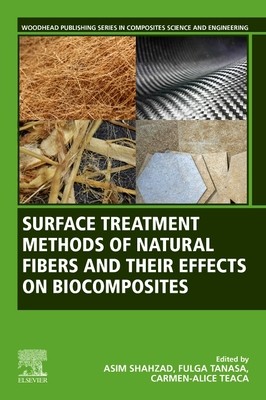
- We will send in 10–14 business days.
- Publisher: Woodhead Publishing
- ISBN-10: 0128218630
- ISBN-13: 9780128218631
- Format: 15.2 x 22.9 x 1.4 cm, softcover
- Language: English
- SAVE -10% with code: EXTRA
Surface Treatment Methods of Natural Fibres and Their Effects on Biocomposites (e-book) (used book) | bookbook.eu
Reviews
Description
Natural fiber composites have experienced a renaissance over the last two decades as a response to societal demands for developing eco-friendly, biodegradable and recyclable materials. They are now being extensively used in everyday products as well as in automotive, packaging, sports and the construction industries. These fibers require surface treatments in order to improve their properties and interfacial bonding with polymer matrices, and to reduce their hydrophilic character. These methods can be grouped into three major categories: chemical, physical and biological. Chemical methods use chemical reagents to reduce fibers' hydrophilic tendency and thus improve compatibility with the matrix. They also expose more reactive groups on the fibre surface to facilitate efficient coupling with the matrix. Physical methods change structural and surface properties of the fiber and thereby influence the interfacial bonding with matrices, without extensively changing the chemical composition of the fibers. They are cleaner and simpler than the chemical methods. Biological methods use biological agents like fungi, enzymes and bacteria to modify the fiber surface properties. These methods are not toxic like chemical methods and are not energy-intensive like physical methods.
Surface Treatment Methods of Natural Fibers and their Effects on Biocomposites presents an overview and recent developments of these methods. All the major methods are reviewed, explaining the science and methodology behind each method. The effects of these methods on various properties of fibers and the biocomposites made from these fibers are analyzed in detail. The book will be an essential reference for academic researchers, materials scientists and engineers, postgraduate students and industrial researchers and development scientists and engineers working on natural fibers and biocomposites.EXTRA 10 % discount with code: EXTRA
The promotion ends in 19d.05:49:14
The discount code is valid when purchasing from 10 €. Discounts do not stack.
- Publisher: Woodhead Publishing
- ISBN-10: 0128218630
- ISBN-13: 9780128218631
- Format: 15.2 x 22.9 x 1.4 cm, softcover
- Language: English English
Natural fiber composites have experienced a renaissance over the last two decades as a response to societal demands for developing eco-friendly, biodegradable and recyclable materials. They are now being extensively used in everyday products as well as in automotive, packaging, sports and the construction industries. These fibers require surface treatments in order to improve their properties and interfacial bonding with polymer matrices, and to reduce their hydrophilic character. These methods can be grouped into three major categories: chemical, physical and biological. Chemical methods use chemical reagents to reduce fibers' hydrophilic tendency and thus improve compatibility with the matrix. They also expose more reactive groups on the fibre surface to facilitate efficient coupling with the matrix. Physical methods change structural and surface properties of the fiber and thereby influence the interfacial bonding with matrices, without extensively changing the chemical composition of the fibers. They are cleaner and simpler than the chemical methods. Biological methods use biological agents like fungi, enzymes and bacteria to modify the fiber surface properties. These methods are not toxic like chemical methods and are not energy-intensive like physical methods.
Surface Treatment Methods of Natural Fibers and their Effects on Biocomposites presents an overview and recent developments of these methods. All the major methods are reviewed, explaining the science and methodology behind each method. The effects of these methods on various properties of fibers and the biocomposites made from these fibers are analyzed in detail. The book will be an essential reference for academic researchers, materials scientists and engineers, postgraduate students and industrial researchers and development scientists and engineers working on natural fibers and biocomposites.

Reviews